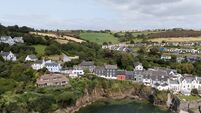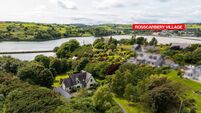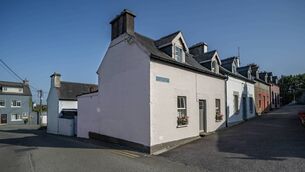House of memories to bounce back?
THE last big change Drumcora House saw was the full-blown recession and jobs depression that came when one of Cork’s biggest employers, the Dunlop Rubber Company, closed its Cork factory.
It shut its plant after 50 years of production, having profitably employed thousands of Corkonians; now that was real recession, none of your namby pamby economic downturn that currently has the country in a spin.
Bow-fronted, slate-faced and shabbily genteel, Drumcora House became the sports and social club for the Dunlop workforce in 1972. It saw the highs and lows of the Dunlop era, the camaraderie, the sporting achievements, the snooker rivalry, the card sharkery, the romance of cabaret nights — and the gloom of sudden, lights-out joblessness.
The Dunlop Employees Social Club survived the 1983 factory closure (when 870 jobs went overnight) by another quarter century, but is now being sold off by the remaining 370 or so members and families who will ultimately benefit from the sale.
Generations of families worked in the factory, producing a wide range of rubber goods — sporting, clothing and others — with the raw material coming in from India. When the adjoining Ford factory wanted to add to its wharves at the Marina and did some dredging to allow larger ships to berth, years’ worth of waste rubber came, in effect, to the surface: “You couldn’t drown if you fell into the water, you’d bounce,” remarks one of the remaining social club members, showing that the Dunlop wit hasn’t perished either.
There’s a book, a social history or a radio documentary still to be made of workers’ memories, and some of the Dunlop and Ford story was indeed dramatised a few years ago in the Corcordorca play Losing Steam, which was, fittingly, performed at the Marina.
The members’ weekly subscriptions paid for the purchase and upkeep of the working men’s club and its sports amenities. Photos on Drumcora’s walls bear testimony to talent and prowess on many a front, and even the nicknames are laden with recall and curiosity. Puzzle the Judge is just one such name, with a story bursting to be re-told.
Drumcora House itself goes back to the 1830s at least, and a conservation report done on this protected structure suggests it may even have parts predating the early 1800s.
It is one of what would have been a row of fine residences along Blackrock Road, with others like Dundanion House just to the east (now a stunning company HQ,) while Rockcliffe House was on the city side.
Drumcora was previously called Carrigduve House, and a Georgian villa on this site was bought by the noted architect Sir Thomas Deane in 1823, who named it Herculaneum, after a statue of Hercules he had placed in the grounds which at the time ran down as far as the river A subsequent owner, Captain George Sherlock, divided off a portion of these original lands.
The next owner, Timothy Mahony of the Blarney textile Mahony family, changed the name to Drumcora, and by the end of the 19th century, it was owned by wine importer and grocer Dominick Daly, whose family had links with the Irish Dunlop Rubber Company and Carrigaline Pottery, among others.
Members of the Doyle stevedoring family also lived in Drumcora House in the mid 1900s, and when it last changed hands, in 1972, it was owned by the Egan family, who had a factory across the Blackrock Road (which still remains one of Cork’s posher addresses).
The conservation architect’s report, done in 2007, highlights Drumcora’s many features, and notes that many of the rooms (upstairs in particular) have barely been touched in decades, which has helped their survival.
Drumcora House, now on a mere quarter acre of walled grounds (but at least with original gates and pillars intact) is being sold via Margaret Kelleher of Lisneys, who seek “expressions of interest” for the house. Price guide is €1.5 million.
Across the Blackrock Road from Menloe Gardens and Menloe Park, it has a host of quality decorative touches — ornate plasterwork, Ionic columns in a large first-floor reception room, fine stone fireplaces, carved timber door frames, tripartite bowed windows and a slate hung exterior, as well as distinctive wrought iron trellis work around the canted entrance porch.
Whether it goes private as a family home once more, or stays more public as professional offices will be up to the interest shown, the depth of buyers’ pockets and the sensitivities and inclinations of the social club’s committee members.
There are examples of sensitive restoration for both uses in the hinterland, and a new chapter beckons. Should be one heck of an emotional going away party, though.












